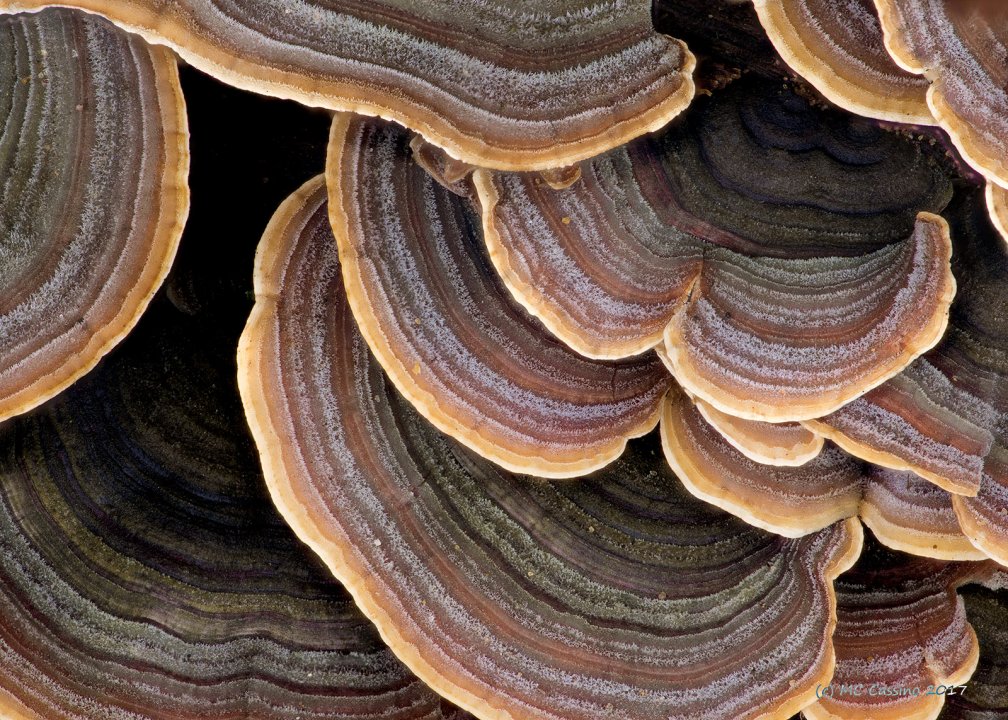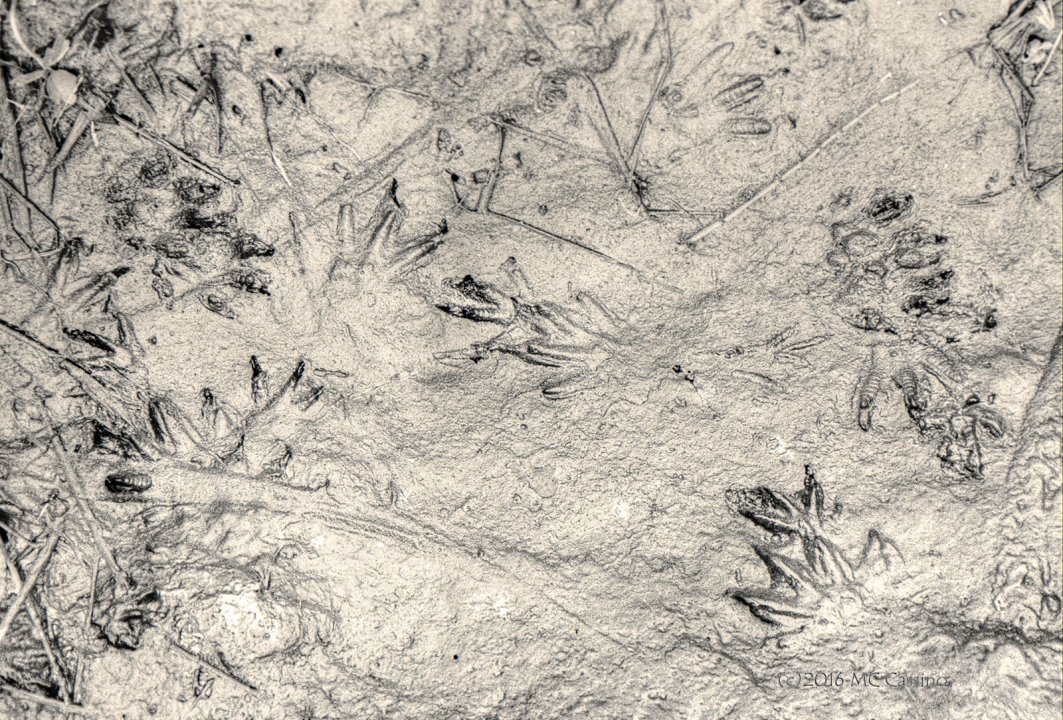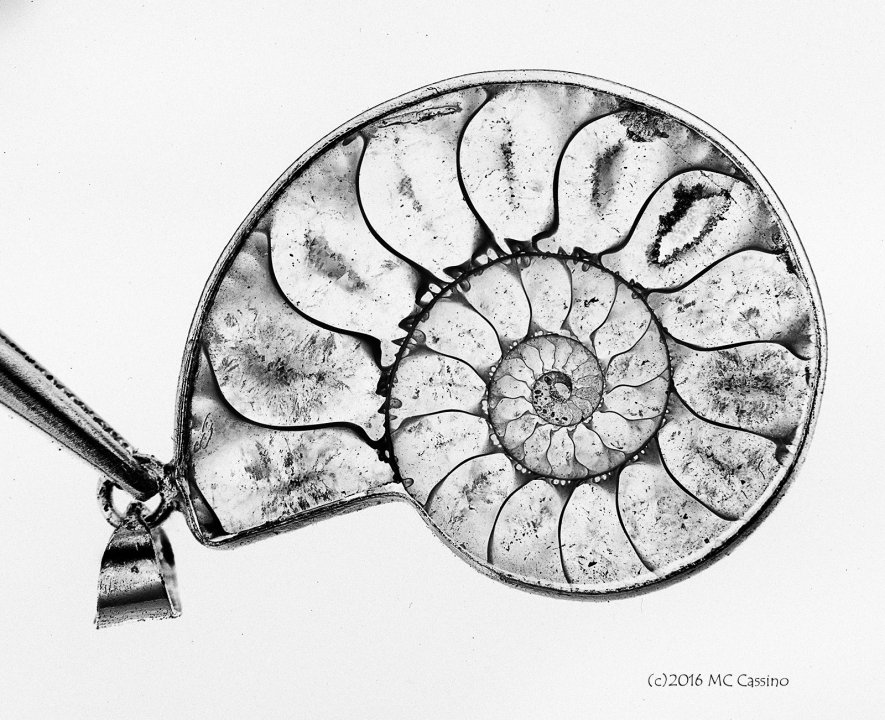Posted by mark on Jan 20 2017 in Macro Photography, Focus Stacking
Posted by mark on Mar 25 2016 in Macro Photography
Posted by mark on Feb 08 2016 in Announcements, Macro Photography
Posted by mark on Oct 05 2015 in Macro Photography, Focus Stacking, Extreme Macro
It's autumn, and time to lay in firewood for the upcoming winter months. I found this spider in my wood pile as I rotated out the remnants of last year's firewood and began stacking a newly delivered load. My best guess on identification is that this is a ground spider, family Gnaphosidae.
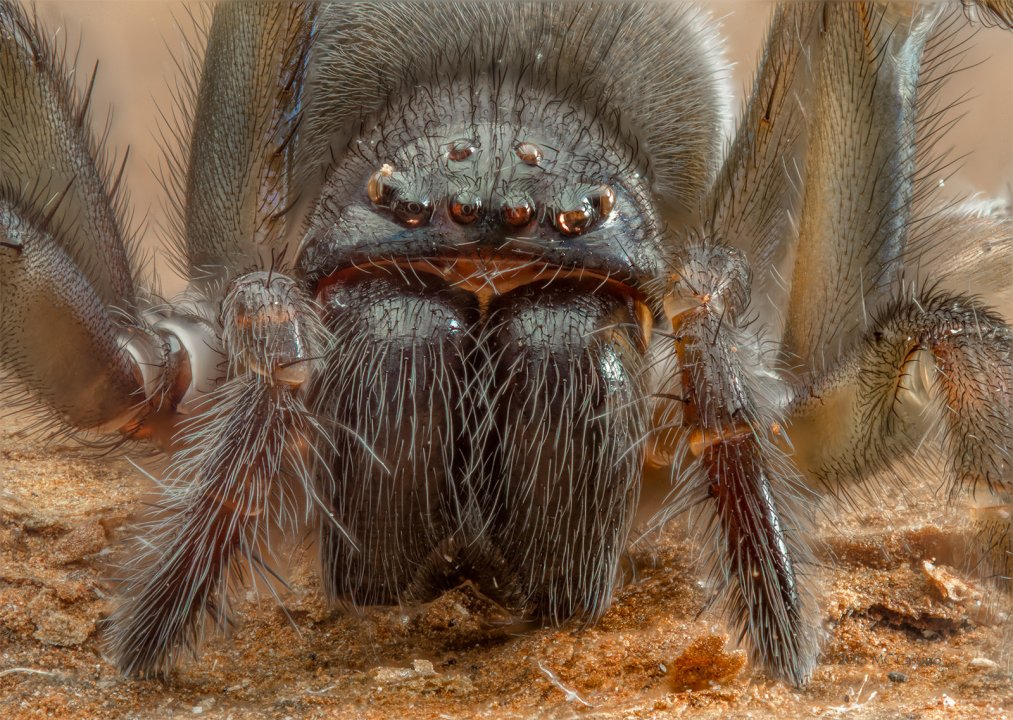
Since it was nestled on a piece of firewood I positioned in on a wood chip to simulate its natural environment. This portrait was made at approximately 3x lifesized and is 135 stacked images (two separate passes on the subject.)
Posted by mark on Sep 24 2015 in Insect Photography, Macro Photography
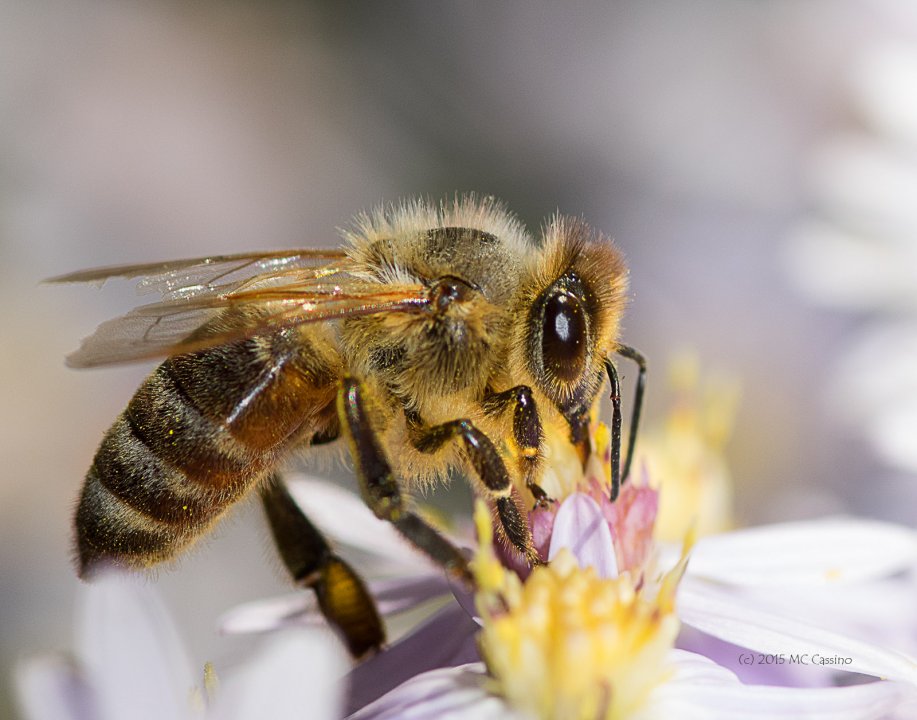
Over the past summer, European honey bees have been infrequent visitors to my little wildflower garden. I've been lamenting their decline and hoping for a return. But now that the wild autumn aster is in bloom, honey bees have suddenly appeared in droves. On a warm after the asters are swarming with literally hundreds of these bees, along with a good number of bumble bees and other native bees. Maybe an urban beekeeper has set up shop nearby? Who knows - but it is great to see them back!

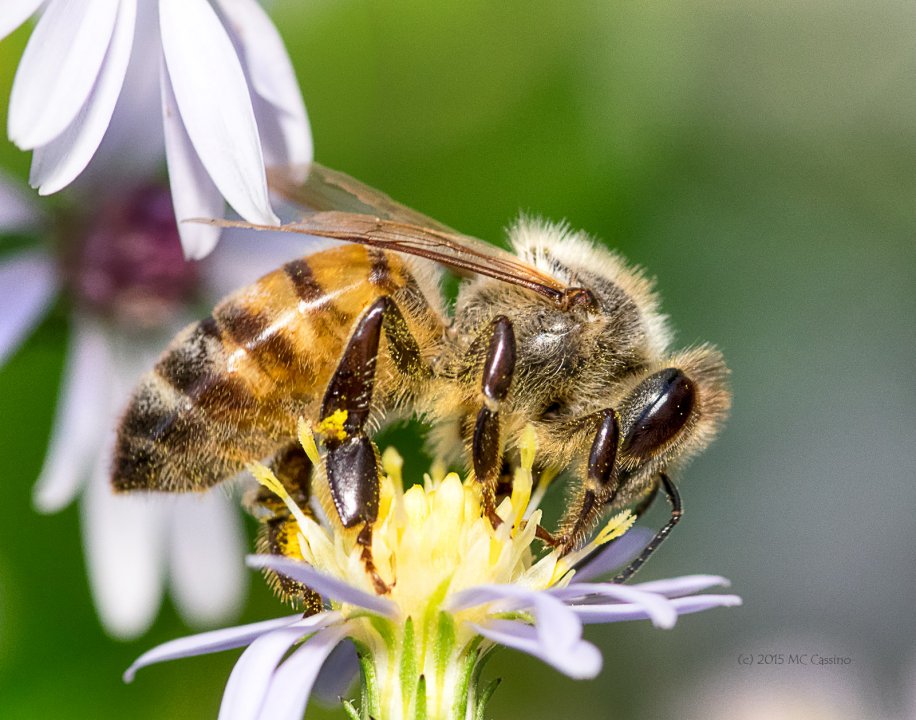

Since the autumn aster will be blooming well into October, I hope to have a few more photos of bees gathering nectar for the winter months.
Posted by mark on Aug 02 2015 in Insect Photography, Macro Photography, Focus Stacking, Extreme Macro

An up close image of a Japanese Beetle - Popillia japonica:
These iridescent beetles love to much on almost anything that grows in your garden, and with the absence of any natural predators in North America, they are indeed a destructive pest.
This photo is a stack focused composite of 54 exposures taken in a single pass at roughly 5x lifesized magnification.
Posted by mark on Jul 28 2015 in Insect Photography, Macro Photography, Extreme Macro
It is summertime and the cicadas are singing... These are insects often heard but less often seen, since they emerge from the ground and fly up into the nearest tree or other roost as soon as possible. This unfortunate individual did not successfully complete metamorphosis - one wind remained ill formed and the whole exuvia of its former shape was stuck to it. I found it thrashing helpless on the ground, so I snatched it up before the birds (or more likely my cat) got to it:
I would tentatively identify it as a male Tibicen linnei - the fact that there are only 10 species of cicada in Michigan helps make the id a little more easy.
This image is only 1.4x lifesized. It was made with a Pentax K3, DFA 100mm macro lens and extension tube. This is 232 images compiled in 2 separate stacks and then blended together.
Posted by mark on Jul 18 2015 in Insect Photography, Macro Photography, Extreme Macro
Common names for these are Cave Crickets, Camel Backed Crickets, Spider Cricket, etc... they live in darkness, eat mold and fungus, and are just kind of ichy.
Cave Cricket (family Rhaphidophoridae)
One of my cats goes crazy whenever she sees one of these. She invariably winds up killing and eating them and then .... let's just say they don't agree with her digestion. Oh well...
I shot this a few weeks ago but screwed up and the pin it was mounted on was visible so I cropped in about 20%to eliminate it - made the top of the frame a little tight (I would like to show more of the antennae). 45 stacked images in a single run. DFA 50mm f2.8 macro reverse mounted with minor extension - approx 2x lifesized.
